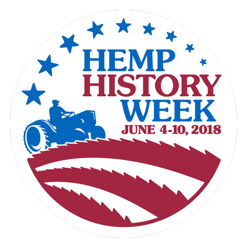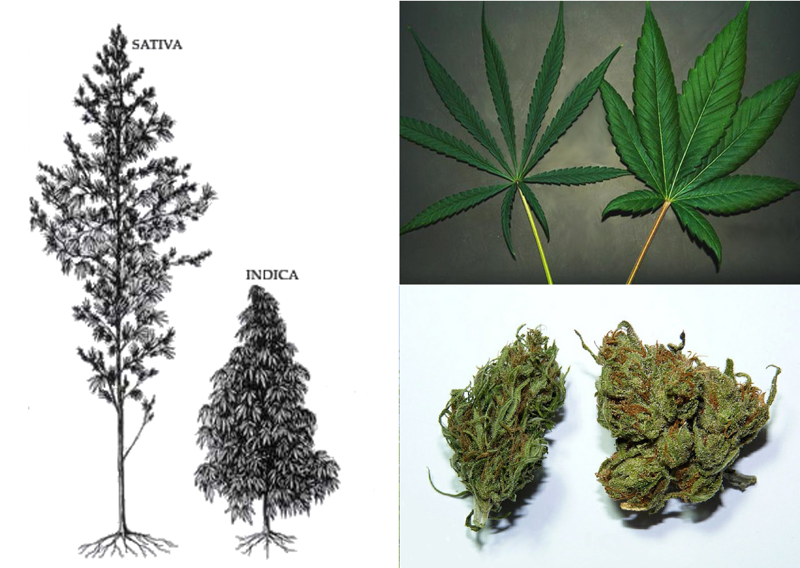Cannabis or Hemp: What’s the Difference?
 Hemp History Week 2018 starts June 4th so let’s consider hemp. What do you think about when hearing the word “cannabis”? For many, what immediately comes to mind are mind-altering properties. Less often, people’s first associations with cannabis are bio plastics, construction materials, sustainable fabrics, or soil remediation.
Hemp History Week 2018 starts June 4th so let’s consider hemp. What do you think about when hearing the word “cannabis”? For many, what immediately comes to mind are mind-altering properties. Less often, people’s first associations with cannabis are bio plastics, construction materials, sustainable fabrics, or soil remediation.
Is All Hemp Cannabis, and All Cannabis Hemp?
During many decades of federal cannabis prohibition, public knowledge on the plant has become limited, and misinformation has entered the discussion. Is all hemp cannabis, and all cannabis hemp? Will you ‘get high’ from hemp? Is it a drug? Fortunately, misinformation is now being corrected by science-based research and spreading to the public. This is due to the hard work of agronomists, sustainability advocates, nutritionists and many others. With this article, we aim to make a small contribution to ending the confusion around cannabis. Cannabis or hemp: exactly what is the difference?
The Cannabis Genus
We will start by taking a closer look at the cannabis genus to see how hemp and cannabis for medical or adult use relate to each other. Cannabis is a genus of flowering plant in the family Cannabaceae. The number of species within the genus is disputed, but at least two separate species can be recognized: Cannabis sativa and Cannabis indica.
There are several visible differences between Cannabis sativa and Cannabis indica. These include height and stature, the size and structure of the leaves, and the size and density of the flowers. Indica plants tend to grow shorter and bushier than the sativa plants. Indica varieties also tend to have shorter leaves with wider blades, whereas sativa varieties have longer leaves with thin long blades. The flowers of indica varieties are generally wide and dense, while sativa varieties usually have less dense and longer shaped flowers.
So, which one of these two species of cannabis is hemp, and which one is not? Unfortunately, the answer isn’t as straightforward as that, but we’ll get there!

Bred for Non-Psychoactive Purposes
Hemp refers to several varieties of Cannabis sativa that have been bred specifically for various non-psychoactive purposes: for fiber that is used for clothing and construction, for oils and topical ointments, healthy foods, and many other product applications. Different types of Cannabis sativa, as well as those of Cannabis indica, are bred specifically for their medical or adult uses.
Thus, not all Cannabis is hemp. Rather, hemp is a group of specific varieties of Cannabis sativa that have certain characteristics. Let’s now zoom in more on some of these key characteristics that differentiate hemp from other types of cannabis.
Chemical Composition
The characteristic that is perhaps the most important in distinguishing hemp from cannabis used for medical or adult purposes, is its chemical makeup. All cannabis types contain different levels of delta-9 THC (tetrahydrocannabinol). This substance is the principal psychoactive constituent of cannabis, when heated.
Cannabis cultivated for medical or adult purposes generally contains 5-30% THC by dry weight. In contrast, hemp is defined as having no more than 0.3% THC by dry weight in the flowering parts. With such a low level of THC present, it is impossible to feel any mind-altering effect or experience a ‘high’ when consuming hemp products. The U.S. government strictly regulates the concentration of THC in the cultivation and production of cannabis products. In this way, when you purchase a product labeled as ‘hemp’, you can trust its THC levels are controlled and you will not experience any psychoactive effects.
Another important constituent of cannabis is CBD (cannabidiol). Hemp often contains higher levels of CBD than other types of cannabis. CBD is used for the natural treatment of numerous diseases and conditions, without causing any mind-altering effects. Moreover, it acts as THC’s antagonist, essentially further eliminating the effect any minimal amount of THC might have.
Uses and Benefits
As the wording already suggests, cannabis used for medical or adult uses is generally used for its mental and physical effects, such as a ‘high’ feeling, a general change in perception, a heightened mood, or it is prescribed for the relief of certain medical symptoms. It can also be used to achieve an increase in appetite.
Hemp is not prescribed by a doctor or used for any psychoactive purposes, but has numerous other uses. Its applications range from health foods and supplements, skin products, paper, bio-plastics, construction and insulation, car-parts, ropes, animal bedding, and many more. Hemp is known to have over 25,000 possible applications! Different hemp varieties are developed and refined for these specific industrial applications. Some of these varieties are known for their strong fiber, while others might yield high-quality CBD oil, or nutritious seeds. Lately hemp is also receiving attention as a regenerative agricultural crop, since hemp can help to prevent soil erosion, build soil and even mitigate pollution.
From Confusion to Action
Whether you appreciate cannabis in all its forms, or only prefer products made from hemp varieties, is a personal matter. However, whatever one’s personal preference, the fact that the government categorizes the non-psychoactive hemp plant as a Schedule 1 Controlled Substance, along with hard drugs such as heroin, methamphetamines and cocaine, is wrong, misleading and unnecessarily restrictive. This situation has maligned hemp’s reputation and negatively stigmatized the crop.
For this reason, it is important that we educate the public about hemp’s utility and benefits, and how it can be differentiated from other types of cannabis. Spread this message and help educate your community about this wondrous plant and its many benefits. Knowledge is power! Let’s change federal policy and once again let U.S. farmers grow hemp!
from Amber Quinn for Hemp History Week
Used by permission.
